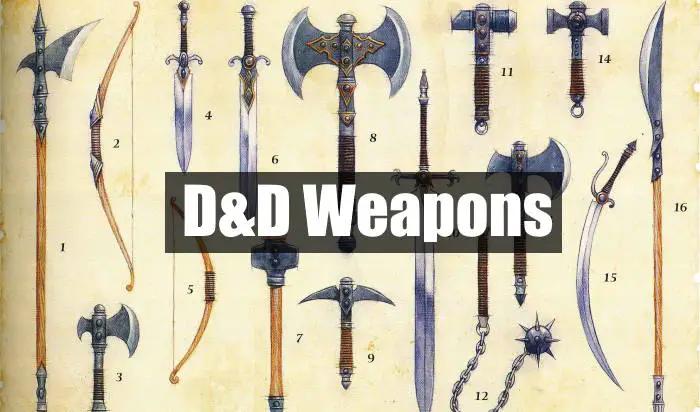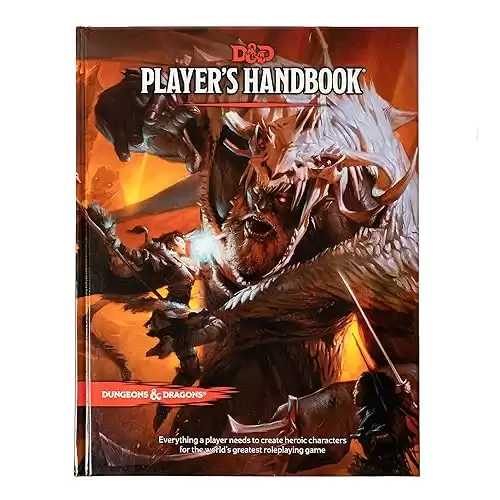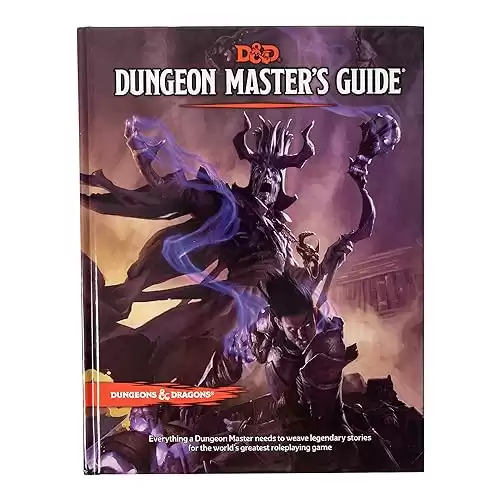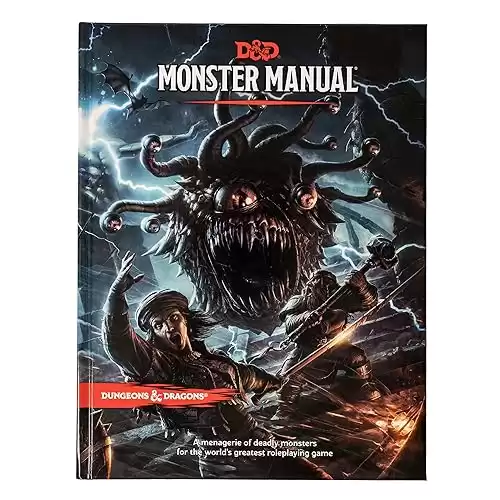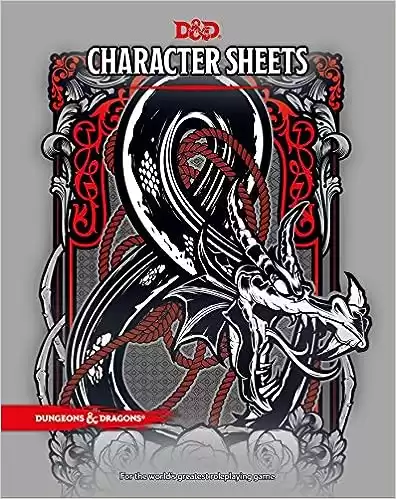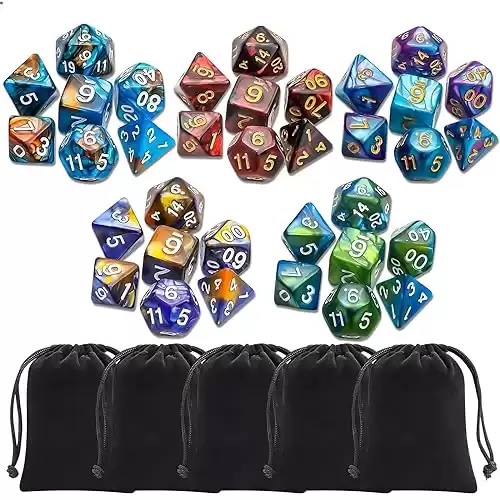Along with exploration and social interaction, combat is one of the three major pillars of DnD 5e. Unless you exclusively use spells, you’ll need the right weapon to get through battle in one piece. But what weapons can you choose from in, and how do they even work?
Whenever you take the attack action, you make a d20 roll using whatever weapon you’re wielding. That could be a sword, a bow, or even your fists. Each weapon has different rules for using it, such as whether it’s one-handed or two-handed. Each class also gives you different weapon proficiencies, which represent what tools you’re trained to use. Your weapons will determine your tactics, at what range you can fight, and how much damage you’ll deal.
Combat is the most complicated aspect of DnD, so it should be no surprise that there are lots of nuances and special rules for weapons. Luckily for you, we’re about to break down all the details of using weapons, as well as which ones are worth a slot in your inventory
How Do Weapons Work?
Before we dive into the details, we need to understand the basics of weapons and attacking. Depending on your class and playstyle, attacks could easily be the most common roll you make in a game. It’s important to understand exactly how they work, as well as the attack options that different weapons can provide.
What is Weapon Proficiency?
Every class, and even some races, give your character proficiency with certain weapons. Proficiency represents your character’s training and expertise, but you don’t need to be proficient with a weapon to use it. Even if you don’t have specific training, you could still swing a sword or hammer at someone and do some damage.
However, there’s a reason most characters stick to weapons they’re proficient with. When you make an attack roll, you add your proficiency bonus to the result if you’re proficient with the weapon you used. This is a pretty big incentive to use the weapons you’re trained with, even if they’re not the strongest. You have to hit in order to do damage, and losing your proficiency bonus makes that much less likely.
What Categories of Weapons Exist?
There are two major distinctions between 5e weapons: melee vs ranged and simple vs martial.
Melee weapons can only target creatures within your reach. Most PCs have a reach of 5ft, but some monsters can have a larger reach depending on their size. These weapons also add your Strength modifier to both attack and damage rolls.
Ranged weapons can attack creatures over a longer distance, and they add your Dexterity modifier to attack and damage rolls. Keeping yourself away from enemies and dealing damage to them is a fantastic option, but there are some downsides to keep in mind.
Each of these weapons have both a normal range and a long range. You can attack targets within either, but you have disadvantage if the target is in your long range.
You also have disadvantage on ranged attacks if you’re in melee with an enemy. If a hostile creature is within 5 ft., can see you, and isn’t incapacitated, you have disadvantage on all ranged attack rolls. Even if that creature isn’t your target, you’ll still have disadvantage.
Lastly, simple and martial weapons don’t have any special properties. Some classes will give you proficiency with simple or martial weapons, but there’s no other defining mechanics for either group. In the worlds of DnD, simple weapons are common and easy to use, while martial weapons require more specialized training.
How Do I Attack with a Weapon?
Making a weapon attack is pretty simple. First, you select a target within your weapon’s range. For melee attacks, this will often be 5ft., but ranged attacks can vary quite a bit. Second, your DM will tell you if the target has cover, whether you have advantage or disadvantage, and if there are any other bonuses or penalties.
Next, you roll a d20. You add your proficiency bonus if you’re proficient with your weapon, and you add your Strength or Dexterity modifier to melee or ranged weapons, respectively. Once you calculate the final result, you compare that number to the target’s Armor Class.
RELATED: Dungeons and Dragons Armor Class: A Complete Guide
If the result is equal to or greater than the target’s AC, you hit! You’ll roll your weapon’s damage dice, again adding your Str or Dex mod depending on the weapon, but not your proficiency bonus. If you miss, you don’t do any damage.
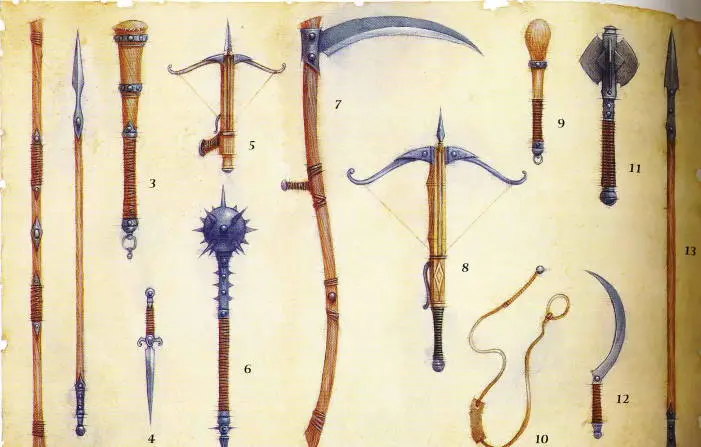
What Are Weapon Properties?
5e offers a wide variety of weapons, so it makes sense that they can have completely different uses. Weapon properties describe the special ways you can use a weapon, or even limit who can wield the weapon at all.
Ammunition
Ranged weapons that require ammunition, such as arrows for bows, will have this property. In order to make a ranged attack with these weapons, you have to spend a piece of ammunition. After the battle, however, you can spend one minute to recover half of the ammunition you spent.
These weapons will also have their normal and long ranges listed next to this property. As an example, Ammunition (80/320) means the weapon has a normal range of 80 ft. and a long range of 320 ft.
You can also make melee attacks with these weapons, but they don’t do as much damage when used this way. They count as improvised weapons when you make a melee attack with them, which we’ll cover later on. You also have to load a sling to make a melee attack with it.
Finesse
When you attack with a finesse weapon, you can choose to add either your Strength or Dexterity modifier to the roll. Whichever you choose, you use that number for both the attack and damage roll. Finesse weapons are a great melee option for classes like Bards or Rogues that have great Dexterity.
Heavy
Heavy weapons are too large or hefty for Small creatures to wield them effectively. Whenever a Small creature makes an attack roll with a heavy weapon, they have disadvantage. This property appears on weapons with the best damage output in the game.
Light
If you want to dual wield, you need to hold a light weapon in each hand. When you use your action to attack with a light weapon, you can use your bonus action to make a single attack with another light weapon in your other hand. If the bonus attack hits, you only add your modifier to the damage if it’s negative.
Loading
It takes time to load certain ranged weapons, limiting the number of times you can attack with them. Whenever you attack with a loading weapon, you can only make one attack even if you could normally attack more than once.
Range
All weapons that let you make a ranged attack with them have a normal range and long range. These ranges are listed after the Ammunition or Thrown property, depending on the weapon. As an example, Ammunition (80/320) means the weapon has a normal range of 80 ft. and a long range of 320 ft.
Reach
Melee weapons with this property extend your reach by 5 ft. when you attack with them, even for opportunity attacks.
Special
There are two weapons in the game with their own “special” rules.
Lances have disadvantage when you attack a target within 5 ft., and they require two hands to use when you aren’t mounted.
Nets restrain Large or smaller creatures when they hit, but they have no effect on larger creatures or creatures with no form. You can only make one attack when you use a net, even if you could normally attack more than once.
A creature can use its action to make a DC 10 Strength check to free itself or another creature restrained by a net. A creature can also destroy the net by dealing 5 slashing damage to it (AC 10), and doing so does not injure the restrained creature.
Thrown
As the name suggests, you can throw these weapons to make a ranged weapon attack. You still have to use the ability modifier you typically would for the weapon: Stength for melee weapons, Dexterity for ranged weapons, and either for finesse weapons.
Two-Handed
You can only wield these weapons if you use both hands to hold it.
Versatile
You can use either one or two hands to hold these weapons. The weapon’s listed damage die is its one-handed damage, and its two-handed damage will be listed next to this property. As an example, a spear does 1d6 piercing damage when you hold it with one hand, and it deals 1d8 piercing damage when you use two hands.
What Are Silvered Weapons?
As you reach higher levels in your campaign, you might come across some monsters with resistance or immunity to nonmagical weapon damage. One way to get around this is to silver your weapons, though it doesn’t work against every monster with these resistances.
In order to sliver one of your weapons, or ten pieces of ammunition, you can pay a capable smith 100 gp.
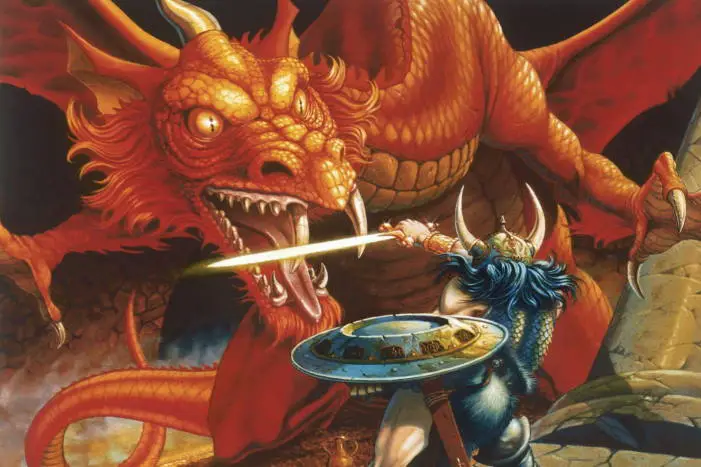
What Weapons Exist in DnD?
Now that you know how to attack with a weapon and what each property means, what weapons are even at your disposal? Below, you’ll find all the weapons typically available in a 5e setting.
You might notice that there are many real-world weapons that aren’t listed below, but that doesn’t mean you can’t use them. Your DM may agree to flavor a longsword as a katana, for example, allowing you to fulfill your vision of a character without creating rules for new weapons.
Simple Melee Weapons
| Weapon | Cost | Damage | Weight | Properties |
| Club | 1 sp | 1d4 bludgeoning | 2 lb. | Light |
| Dagger | 2 gp | 1d4 piercing | 1 lb. | Finesse, light, thrown (20/60) |
| Greatclub | 2 sp | 1d8 bludgeoning | 10 lb. | Two-handed |
| Handaxe | 5 gp | 1d6 slashing | 2 lb. | Light, thrown (20/60) |
| Javelin | 5 sp | 1d6 piercing | 2 lb. | Thrown (30/120) |
| Light hammer | 2 gp | 1d4 bludgeoning | 2 lb. | Light, thrown (20/60) |
| Mace | 5 gp | 1d6 bludgeoning | 4 lb. | – |
| Quarterstaff | 2 sp | 1d6 bludgeoning | 4 lb. | Versatile (1d8) |
| Sickle | 1 gp | 1d4 slashing | 2 lb. | Light |
| Spear | 1 gp | 1d6 piercing | 3 lb. | Thrown (20/60), versatile (1d8) |
Simple Ranged Weapons
| Weapon | Cost | Damage | Weight | Properties |
| Crossbow, light | 25 gp | 1d8 piercing | 5 lb. | Ammunition (80/320), loading, two-handed |
| Dart | 5 cp | 1d4 piercing | 1/4 lb. | Finesse, thrown (20/60) |
| Shortbow | 25 gp | 1d6 piercing | 2 lb. | Ammunition (80/320), two-handed |
| Sling | 1 sp | 1d4 bludgeoning | – | Ammunition (30/120) |
Martial Melee Weapons
| Weapon | Cost | Damage | Weight | Properties |
| Battleaxe | 10 gp | 1d8 slashing | 4 lb. | Versatile (1d10) |
| Flail | 10 gp | 1d8 bludgeoning | 2 lb. | – |
| Glaive | 20 gp | 1d10 slashing | 6 lb. | Heavy, reach, two-handed |
| Greataxe | 30 gp | 1d12 slashing | 7 lb. | Heavy, two-handed |
| Greatsword | 50 gp | 2d6 slashing | 6 lb. | Heavy, two-handed |
| Halberd | 20 gp | 1d10 slashing | 6 lb. | Heavy, reach, two-handed |
| Lance | 10 gp | 1d12 piercing | 6 lb. | Reach, special |
| Longsword | 15 gp | 1d8 slashing | 3 lb. | Versatile (1d10) |
| Maul | 10 gp | 2d6 bludgeoning | 10 lb. | Heavy, two-handed |
| Morningstar | 15 gp | 1d8 piercing | 4 lb. | – |
| Pike | 5 gp | 1d10 piercing | 18 lb. | Heavy, reach, two-handed |
| Rapier | 25 gp | 1d8 piercing | 2 lb. | Finesse |
| Scimitar | 25 gp | 1d6 slashing | 3 lb. | Finesse, light |
| Shortsword | 10 gp | 1d6 slashing | 2 lb. | Finesse, light |
| Trident | 5 gp | 1d6 piercing | 4 lb. | Thrown (20/60), versatile (1d8) |
| War pick | 5 gp | 1d8 piercing | 2 lb. | – |
| Warhammer | 15 gp | 1d8 bludgeoning | 2 lb. | Versatile (1d10) |
| Whip | 2 gp | 1d4 slashing | 3 lb. | Finesse, reach |
Martial Ranged Weapons
| Weapon | Cost | Damage | Weight | Properties |
| Blowgun | 10 gp | 1 piercing | 1 lb. | Ammunition (25/100), loading |
| Crossbow, hand | 75 gp | 1d6 piercing | 3 lb. | Ammunition (30/120), light, loading |
| Crossbow, heavy | 50 gp | 1d10 piercing | 18 lb. | Ammunition (100/400), heavy, loading, two-handed |
| Longbow | 50 gp | 1d8 piercing | 2 lb. | Ammunition (150/600), heavy, two-handed |
| Net | 1 gp | – | 3 lb. | Special, thrown (5/15) |
Improvised Weapons and Unarmed Strikes
Of course, you might not always have access to traditional weapons. Sometimes you’ll have to make use of whatever you can, and DnD has rules to help you resolve that.
You can use nearby objects as improvised weapons, and they function similarly to normal weapons. You still make an attack roll, using either Strength or Dexterity for melee and ranged attacks, respectively, and you add that modifier to the damage roll.
Some improvised weapons may resemble other weapons that you’ve had training with. Your DM may rule that a table leg counts as a club, that a shard of glass counts as a dagger, or that any other improvised weapon resembles something else. If they do, you can add your proficiency bonus to the attack roll, as well as use the standard weapon’s damage dice. If the improvised weapon doesn’t resemble anything, you don’t add your proficiency bonus, and it deals 1d4 damage if it hits.
Your typical weapons can also count as improvised when you use them in unexpected ways. Throwing a melee weapon that doesn’t have the thrown property, or making a melee attack with a ranged weapon, counts as using an improvised weapon. Both of these attacks deal 1d4 damage if they hit, and they don’t use your proficiency bonus. If you throw a melee weapon, it has a normal range of 20 ft. and a long range of 60 ft.
Lastly, you might just choose to punch, kick, or otherwise make an unarmed strike. These aren’t weapon attacks, but you’ll still make an attack roll using your Strength modifier and proficiency bonus. An unarmed strike that hits deals bludgeoning damage equal to 1 + your Str mod.
What Are the Best 5e Weapons for Each Class?
Now that you’ve seen what weapons are at your disposal, you might’ve noticed that some are strictly better than others. A warhammer gives you more options than a flail, for instance, but picking your weapon isn’t always so simple. Depending on your class, you might have a tough time determining the best weapon for your build.
If a certain weapon feels cool or inspiring, such as being a Triton wielding a trident, then you should go for that! Doing what feels right will be more fun than doing what’s optimal just for the sake of it. However, if you have fun crafting the best build you can, that’s awesome too! You’ll want to stick with certain weapons to deal as much damage as your class allows.
Artificers, Sorcerers, Warlocks, and Wizards
Unless you’re playing as a specific subclass, such as the Hexblade or the Bladesinger, none of these classes will rely on their weapons. It’s much more likely that you’ll have a cantrip that does damage, and that will serve as your bread-and-butter attack.
If you do want to use a weapon, though, I’d recommend the quarterstaff for melee and the light crossbow for ranged. These both do the most damage available, and you should only go to other options if you choose Strength or Dexterity as a dump stat.
Barbarians, Fighters, Paladins, And Rangers
The martial classes have the toughest choice to make. There are many excellent options, and barbarians, fighters, and paladins can make good use of all of them. If you’re fighting in melee, my recommendation would be the greatsword or maul. These weapons have the best damage outputs in the game, and they’re more consistent than the greataxe. However, I think the glaive, halberd, or pike are all good choices as well since they have great damage and an extra 5 ft. of reach.
If you’re playing a melee ranger, I wouldn’t recommend the same weapons as I did for the other classes. The fighting styles you get are Dueling and Two-Weapon Fighting, neither of which work with greatswords, halberds, and the like. Instead, dual wielding scimitars lets you get an extra attack each round, which means you can get even more value from Hunter’s Mark. This is one of, if not the best spell for Rangers, so you’ll want to get the most out of it.
If you’re playing a Dex-based character, most likely a fighter or ranger, I’d go with the longbow. The heavy crossbow might do more damage, but its loading property doesn’t work well with the extra attacks these classes get. Longbows, on the other hand, still have good damage and an excellent range, letting you stay safe in combat.
Bards and Rogues
These two classes have a lot in common when it comes to weapons: they’ll want to use Dexterity, and they’ll likely only get one attack each round.
For both, my first recommendation is the light crossbow. It deals 1d8 damage at a distance, which is quite strong on its own. Neither bards nor rogues are particularly hardy, so the further they can stay from the action, the better. These classes also don’t mind that it has loading, since they’ll only be attacking once regardless.
If you are interested in mixing it up in melee, however, the rapier is your next best bet. It’s a finesse weapon that deals 1d8 damage, making it the strongest melee weapon for Dex-based characters.
Clerics, Druids, and Monks
For these last three classes, the spear is an excellent option. Both the spear and the quarterstaff are simple melee weapons that can deal 1d8 damage, but I’m recommending the spear because you can also throw it. That’s just an extra option that you’re losing if you choose the quarterstaff, though it’s not something that comes up often.
Some clerics, however, get access to martial weapons. If you take a subclass such as the Tempest or War Domain, I’d recommend using a battleaxe, longsword, or warhammer. These might not do as much damage, but they allow you to hold a shield in your off-hand when you need the extra armor.
Since clerics can heal the party and save others from death, I’m prioritizing their defense over their damage. If you disagree, though, feel free to follow my previous recommendation for the martial classes!
Druids likely won’t rely on their weapons, much like the previous spellcasters. However, they can dual wield scimitars if you want to get involved in melee. Personally, I think that spells and Wild Shape will be your most effective tools in combat, but scimitars are your best option if you’re dead set on using weapons.
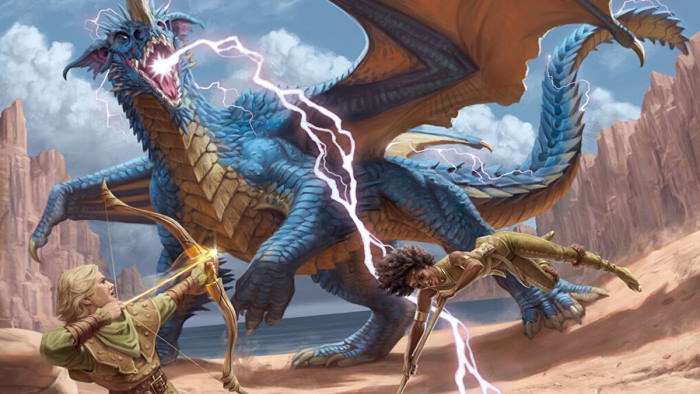
What are Magic Weapons?
So far, we’ve only looked at ordinary weapons. Depending on your setting, you could also encounter wondrous weapons infused with magical powers. Magic items are always a fun buff for your characters, and magic weapons can have a huge impact on your game.
Magic weapons will use the base stats of an ordinary weapon, and they require the same proficiency. A Sun Blade, for example, is a magical longsword, and a Sword of Vengeance can be any type of sword. Even though they work similarly to your typical weapons, there are two big differences:
First, their damage is magical. Even if you use nonmagical ammo with a ranged magic weapon, the damage will count as magical. Some monsters are resistant or immune to nonmagical damage from weapons, so these items get around that. As you reach higher levels and encounter more and more extraplanar threats, a trusty magic weapon is a great boon.
Second, of course, is their magical effects! These weapons have unique powers that let you take on new challenges or give you variety in combat. A Dragon Slayer deals an extra 3d6 damage to dragons, and the Javelin of Lightning turns into a bolt of lightning when you throw it! There are plenty of cool magic weapons worth using in your campaigns, so start with the Dungeon Master’s Guide if you want to check out some of your options.
How Do +X Weapons Work?
Any weapons with a +X bonus are quite simple. You just add that bonus to the weapon’s attack and damage rolls! While this might not be the most flashy ability, it’s certainly a useful one. These also still count as magic weapons, so they can overcome the resistances and immunities of certain creatures.
+X ammunition works in the same way: you add the bonus to a ranged attack’s rolls when you use the ammo. The only catch with these items is that they lose their magical effect once you attack with them, so you can’t reuse your magic ammunition over and over.
Do Firearms Exist in 5e?
Depdending on your campaign’s setting, you might have access to more modern weaponry. Firearms are often more advanced than most settings would allow, but they could easily be commonplace in another! If you’re interested in using firearms or explosives in your campaign, talk to your DM about whether or not they’re present in the setting. Keep in mind that you likely won’t be proficient in firearms without in-game training or a homebrew background.
Firearms
Firearms work just like other ranged weapons, but they can have a few additional properties.
Ammunition
This works just like the previous Ammunition property, except that ammo for firearms gets destroyed upon use. You have to expend one bullet per shot for renaissance and modern weapons, but energy cells can power a weapon until it needs reloaded.
Burst Fire
Weapons with burst fire can be used normally, or you can target a 10 ft. cube area within its normal range. Each creature in that area must succeed on a DC 15 Dexterity saving throw or take the weapon’s normal damage. This can be a powerful way of clearing lots of enemies quickly, but it uses ten pieces of ammunition.
Reload
These weapons can only make so many shots before you need to reload them, using either an action or a bonus action. The number of shots before you need to reload is listed next to this property.
Firearms Tables
| Renaissance Items | Cost | Damage | Weight | Properties |
| Pistol | 250 gp | 1d10 piercing | 3 lb. | Ammunition (30/90), loading |
| Musket | 500 gp | 1d12 piercing | 10 lb. | Ammunition (40/120), loading, two-handed |
| Bullets (10) | 3 lb. | – | 2 lb. | – |
| Modern Items | Cost | Damage | Weight | Properties |
| Pistol, automatic | – | 2d6 piercing | 3 lb. | Ammunition (50/150), reload (15) |
| Revolver | – | 2d8 piercing | 3 lb. | Ammunition (40/120), reload (6) |
| Rifle, hunting | – | 2d10 piercing | 8 lb. | Ammunition (80/240), reload (5), two-handed |
| Rifle, automatic | – | 2d8 piercing | 8 lb. | Ammunition (80/240), burst fire, reload (30), two-handed |
| Shotgun | – | 2d8 piercing | 7 lb. | Ammunition (30/90), reload (2), two-handed |
| Bullets (10) | – | – | 1 lb. | – |
| Futuristic Items | Cost | Damage | Weight | Properties |
| Laser pistol | – | 3d6 radiant | 2 lb. | Ammunition (40/120), reload (50) |
| Antimatter rifle | – | 6d8 necrotic | 10 lb. | Ammunition (120/360), reload (2), two-handed |
| Laser rifle | – | 3d8 radiant | 7 lb. | Ammunition (100/300), reload (30), two-handed |
| Energy cell | – | – | 5 oz | – |
Explosives
Along with firearms, explosives are another option for groups looking to diversify the weapons in their games.
Bombs can be lit and thrown up to 60 ft. as an action. Each creature within 5 ft. that fails a DC 12 Dexterity saving throw takes 3d6 fire damage.
Containers of gunpowder will explode when set on fire. Each creature within 10 ft. of the container makes a DC 12 Dexterity saving throw, either taking full damage (3d6 fire for a powder horn, 7d6 for a keg) on a failure or half damage on a success.
Dynamite, much like bombs, can be lit and thrown up to 60 ft. as an action. Each creature that fails a DC 12 Dexterity saving throw takes 3d6 bludgeoning damage on failure, and half damage on a success.
Binding multiple sticks of dynamite together increases the damage by 1d6 (to a maximum of 10d6) and increases the blast’s radius by 5 ft. (to a maximum of 20 ft.).
You can also put a longer fuse on dynamite so that it explodes after a certain number of rounds. Roll initiative for the dynamite, then keep track of how many rounds have passed. Once the set number of rounds have passed, the dynamite will explode on its initiative count.
Lastly, you can throw a grenade up to 60 ft. away as an action, or use a grenade launcher to shoot it up to 120 ft. away. There are two types of grenades:
A fragmentation grenade deals 5d6 piercing damage to each creature within 20 ft., or half as much if they succeed on a DC 15 Dexterity saving throw. A smoke grenade creates a cloud of smoke within a 20 ft. radius after one round, heavily obscuring the area.
Explosives Tables
| Renaissance Items | Cost | Weight |
| Bomb | 150 gp | 1 lb. |
| Gunpowder, keg | 250 gp | 20 lb. |
| Gunpowder, powder horn | 35 gp | 2 lb. |
| Modern Items | Cost | Weight |
| Dynamite (stick) | – | 1 lb. |
| Grenade, fragmentation | – | 1 lb. |
| Grenade, smoke | – | 2 lb. |
| Grenade launcher | – | 7 lb. |
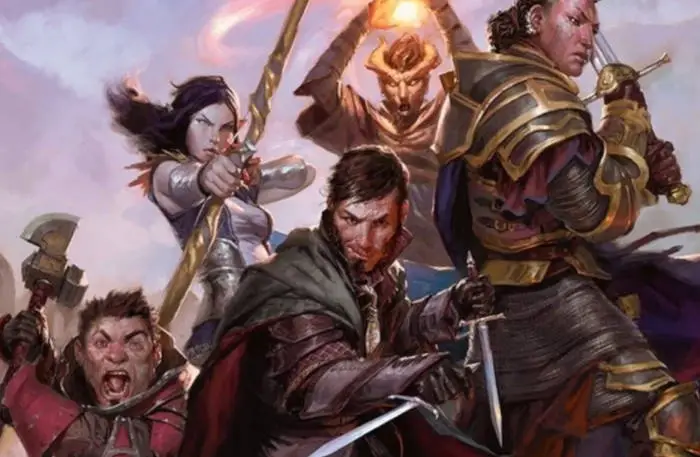
FAQ
What Weapon Does the Most Damage?
Out of the standard 5e weapons, there are four weapons that can all deal a maximum of 12 damage with just their damage dice:
- Greataxe
- Greatsword
- Lance
- Maul
Greataxes and lances do 1d12 damage, and greatswords and mauls do 2d6 damage. The biggest difference between these two pairs is how likely it is that you’ll roll a certain number.
Since every result is just as likely when you roll 1d12, you’ll roll maximum damage more often than 2d6, but you’ll also roll minimum damage more often. When you roll 2d6, you’re more likely to roll average results. Your own preferences and build will determine which of these weapons is right for you.
What is the Worst 5e Weapon?
The blowgun is easily the worst weapon in DnD. It has a fairly short range, you can only make one attack with it per round, and most importantly, it only deals 1 damage. In most combat encounters, you want to maximize your damage output, and the blowgun deals the least amount of damage in the game.
However, this isn’t to say that there are no uses for blowguns. If you wanted a subtle, nonlethal way to deliver a poison, for example, a blowgun would be an excellent option! Still, this isn’t likely to come up all that often.
Can You Dual Wield?
Yes! If you have two light weapons, you can wield one in each hand and use both in combat.
When you use your action to attack with a light weapon, you can use your bonus action to make a single attack with a light weapon in your other hand. If the bonus attack hits, you only add your modifier to the damage if it’s negative.
You can also use the Dual Wielder feat to use two-weapon fighting with any one-handed weapons, not just light ones! This feat would let you dual wield weapons with higher damage outputs, as well as increase your AC.
RELATED: Dungeon and Dragon Feats: A Complete Guide
End Step
Whether you’re charging headfirst into combat or keeping your distance, you’ve got all the tools you need to get through your next battle. I hope this article has taught you something new about DnD’s most intricate pillar of play!
